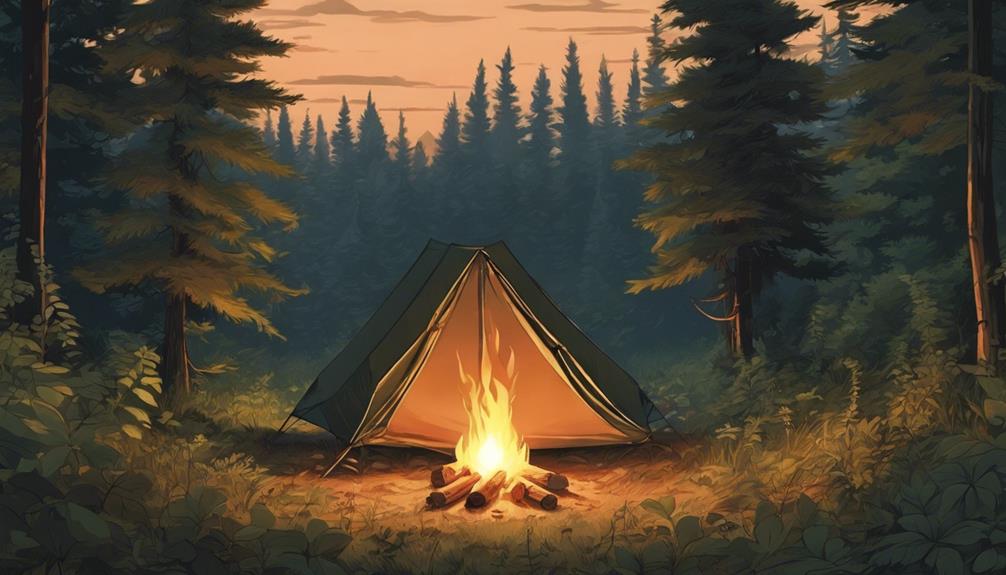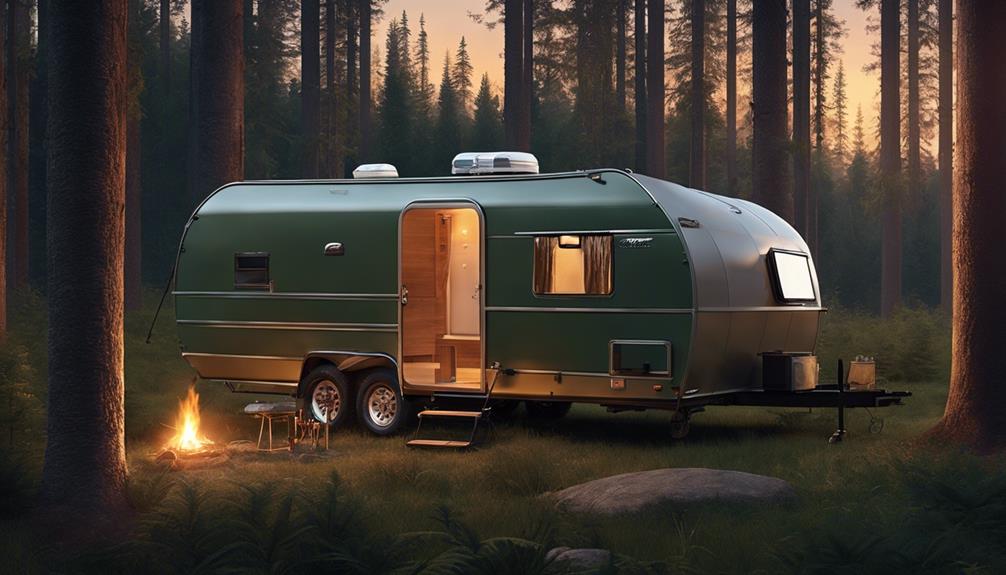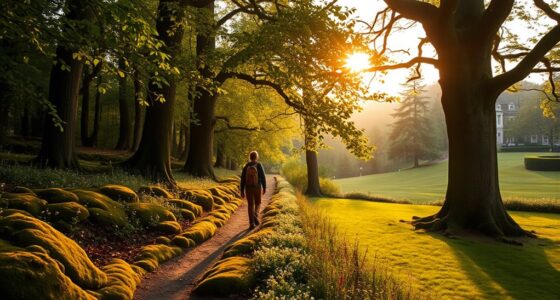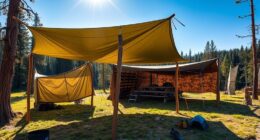When it comes to becoming a stealth camping expert, our expert tips for beginners will completely change your outdoor experience and improve your stealth techniques like never before. Choose low-profile tents in earth-toned colors and equipment that blends in with the surroundings to remain unnoticed. Keep the campsite clean, control noise levels, refrain from having campfires, and make safety a top priority by selecting remote locations and having emergency plans ready.
Communication and emergency preparedness are key, so always have reliable means of contact ready. These tips are just the beginning of what you need to know to excel in stealth camping.
Key Takeaways
- Choose low-profile, earth-toned gear for camouflage.
- Clean campsite thoroughly to leave no trace.
- Manage noise levels and avoid campfires.
- Select secluded, safe camp locations away from high traffic.
- Prioritize emergency communication and preparedness.
Gear Selection and Camouflage
When selecting gear for stealth camping, opt for low-profile tents in earth-toned colors to blend in seamlessly with your surroundings and maintain a low profile. Camouflage is key in staying hidden while camping, so choosing gear that matches the environment is crucial for beginners. Look for tents in shades of green, black, or brown to help you remain unnoticed in the wilderness.
Quick setup gear is essential for stealth camping, allowing you to move swiftly and set up or take down camp without drawing attention.
Utilize shadows and natural cover to your advantage for additional camouflage. Position your tent in a way that it merges with the surroundings, making it harder to spot from a distance. Packing essential items for stealth camping is a must; ensure you have all necessary gear without standing out.
Site Preparation and Cleanliness
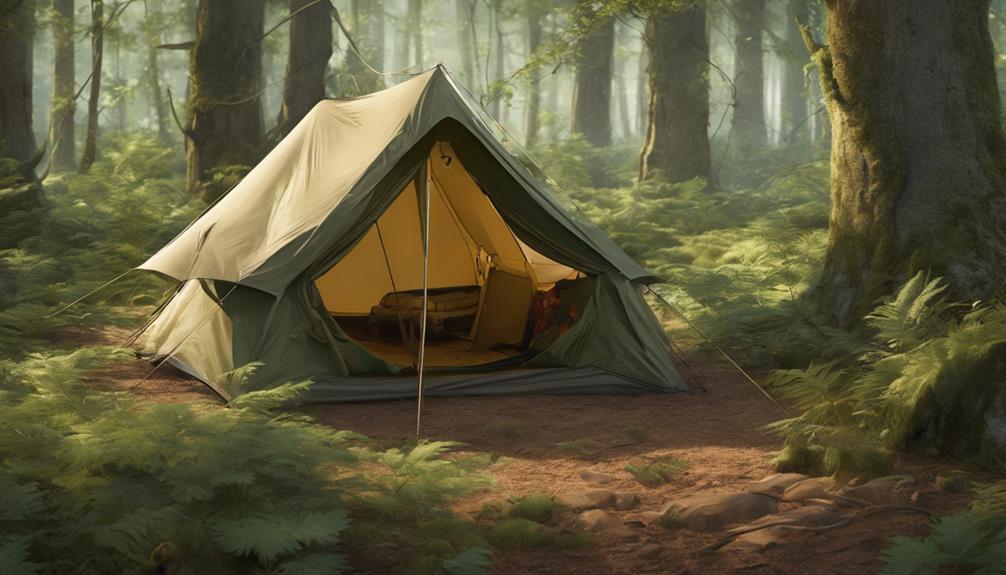
To ensure optimal stealth during camping, thorough site preparation and cleanliness are paramount. When setting up a stealth camping site, it's crucial to follow specific guidelines to remain undetected. Here are five key practices to enhance your stealth camping experience:
- Leave No Trace: Clean the campsite meticulously to erase any evidence of your presence.
- Maintain a Low Profile: Dispose of all trash properly to avoid drawing attention to your location.
- Minimize Waste: Use resources efficiently to reduce your environmental impact and maintain stealth.
- Remove Footprints: Erase tracks, footprints, and any signs of your arrival to stay hidden.
- Practice Good Hygiene: Keep yourself and your camping area clean to avoid leaving any traces behind.
Noise Management and Campfire Avoidance
Preparing for stealth camping involves not only maintaining a low profile but also managing noise levels and avoiding campfires to stay undetected in your surroundings. To minimize noise levels, consider using noise-cancelling devices or earbuds to reduce sound transmission, especially if you need to communicate with a fellow camper. Additionally, traveling solo can significantly lower the need for conversations and decrease noise output, enhancing your stealth camping experience.
When it comes to warmth without a campfire, opt for warm apparel and hand warmers. These alternatives not only keep you cozy during overnight stays but also eliminate the risk of drawing attention with a visible flame. Remember, a key aspect of stealth camping is to leave no trace and avoid activities that may alert others to your presence.
Location Choice and Safety Measures
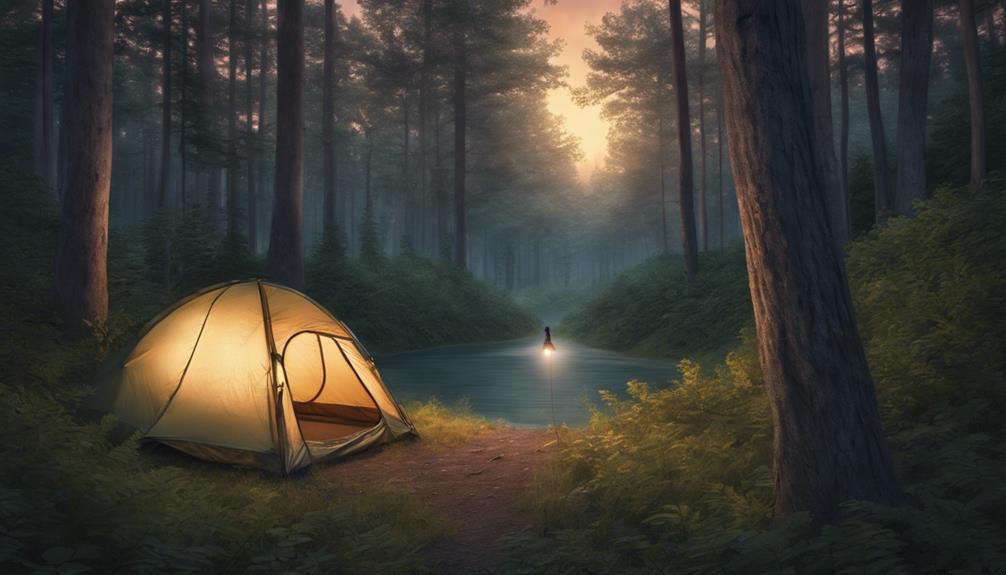
Choosing the right location for stealth camping involves strategic planning and prioritizing safety measures to ensure a secure and undisturbed experience. When selecting a spot for your stealth campsite, consider the following key factors:
- Privacy: Opt for camp locations away from roads and neighborhoods to maintain privacy and reduce the risk of being detected.
- Avoid Detection: Stay clear of high human traffic spots and geocaching areas to minimize the chances of discovery.
- Scout Locations: Before setting up camp, scout the area to ensure it provides a secure and discreet environment for your stay.
- Safety Measures: Prioritize safety by avoiding flood-prone areas and being cautious of revealing your location to dogs.
- Emergency Plan: Always have an emergency plan in place, including the ability to quickly set up camp and relocate if necessary.
Communication and Emergency Preparedness
In ensuring a safe and effective stealth camping experience, prioritizing communication and emergency preparedness is paramount. When venturing into the wilderness, it's crucial to have reliable means of emergency communication. Carrying a whistle or signal mirror can be lifesaving in dire situations, allowing you to attract attention and signal for help. Additionally, sharing your camping location with a trusted contact enhances your safety by ensuring someone knows where you're at all times.
To stay prepared, always have a backup power source for your communication devices. This ensures that you can reach out for help even in remote locations. Learning basic signaling methods for rescue situations is also essential. Practice emergency drills to familiarize yourself with potential scenarios and responses, empowering you to act swiftly and effectively in emergencies.
In the wilderness, every precaution counts. Equip yourself with essential communication tools like a signal mirror and whistle, and be proactive in your emergency preparedness to make the most of your stealth camping adventures.
Frequently Asked Questions
How Do I Start Stealth Camping?
We begin stealth camping by researching local laws, choosing secluded spots, practicing quick setups, camouflaging gear, and having emergency plans. Experience teaches us to blend in, stay safe, and respect nature.
What Are the Rules of Stealth Camping?
Rules of stealth camping include leaving no trace, respecting regulations, prioritizing privacy, minimizing noise, and choosing low-traffic areas. Research legalities and restrictions, abide by ethical outdoor practices, respect wildlife, and be self-reliant for successful stealth camping.
How Do Beginners Start Camping?
We begin camping by researching locations, choosing gear, and mastering basic skills. Setting up a tent, building a fire, and cooking outdoors are key. Safety, packing smartly, and learning from experienced campers help us start this adventure.
What Is the Best Color for Stealth Camping?
For stealth camping, earth-toned colors like green, brown, and black are ideal. Bright tones such as neon or white can make you stand out. Choosing gear in natural hues helps blend in and maintain a low profile.
Are the Stealth Camping Tips for Beginners applicable to Invisible Adventure?
Looking to level up your invisible adventure? The stealth camping adventure tips for beginners can definitely apply here. Learning how to remain unseen and navigate discreetly through the wilderness is a crucial skill for any invisible adventure. These tips will help you stay hidden and enjoy your adventure to the fullest.
Conclusion
In conclusion, when it comes to stealth camping, remember to always prioritize safety, respect nature, and leave no trace behind.
With the right gear, preparation, and mindset, you can enjoy the thrill of blending in with your surroundings and experiencing the great outdoors like never before.
So go forth, brave stealth campers, and embrace the wild with the stealth of a ninja and the stealthiness of a ghost in the night.
Happy camping!

